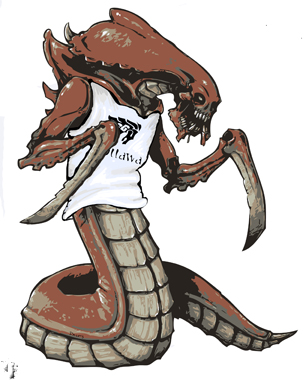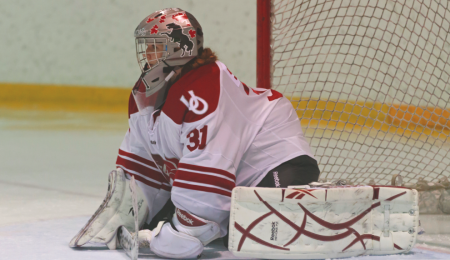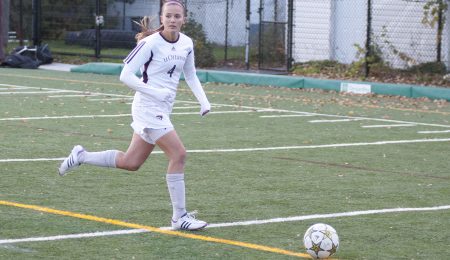Should games played using a digital medium be recognized as sports?
Maclaine Chadwick | Fulcrum Staff
WHEN WE THINK of Call of Duty, World of Warcraft, StarCraft, or Halo, it’s unlikely that our minds conjure up the image of a professional athlete—but that may change in the not-too-distant future thanks to the explosion in popularity of electronic sports.
It doesn’t come as a surprise that electronic sports, or e-sports, is one of the fastest-growing leisure activities around—just ask any kid with a Nintendo DS. E-sport’s roots lie in Korean culture, where, for years, gamers have attained professional status and actually make a living off of sponsorships and competition winnings.
The popularity of e-sports has triggered the age-old debate of what is and isn’t a sport. Not surprisingly, many people say the absence of physical exertion is what prevents e-sports from being recognized as an athletic event.
But when comparing e-sports to more traditional sports, one may find more similarities than differences.
“There is the same level of competitiveness, this overall sense of connectedness, and sense of sportsmanship in the international community,” said Scott Job, a member of the University of Ottawa’s StarCraft team. “The only thing that makes it not a real sport in the eyes of many people is just the fact that you’re not running around on a field, thus the term ‘e-sports.’”
In some countries, extremely skilled e-sport players can attain professional status and even play on sponsored teams. “The pro players are training 10–16 hours a day. They’re training really hard,” said Job.
In cultures where gaming is the most popular, players are idolized like professional athletes.
“Especially in Korea, where it’s the biggest right now. These people are celebrities and sex symbols in Korea,” said Job.
In Canada and the United States, Collegiate StarLeague (CSL) is an organization that governs 240 college and university StarCraft teams. The teams, which consist of at least five players, compete weekly against other schools, and gather two to three times per season to compete at Local Area Network (LAN) events. The league has grown significantly in its first five years of operation, and is expanding even further to create high school leagues. The U of O team joined CSL in its third season and competes locally, nationally, and internationally on a weekly basis .
Even though they compete against teams from schools like Harvard University and Duke University, the StarCraft team cites none other than Carleton University as their biggest rival.
The LAN events mimic traditional sports events as well.
“You’re not gathering around and watching people playing online; they are usually there playing the game and you can see them. I’d liken it to a sports event,” explained Job.
Professional events in pro leagues can even attract some rowdy spectators.
“People go and support their favourite teams, their favourite players. And they go nuts, I’ve seen the body paint,” said Job.
Another facet of e-sport spectatorship is the many smaller events planned for spectators to meet, play, and socialize—defying many conceived stereotypes of the participants.
“People think that it’s nerds in their parents’ basements playing video games, but it’s not. That’s not what it is at all. There is an event that runs every couple weeks called BarCraft. You go to the bar and they project it on the wall,” explained Job.
BarCraft events are held at Clock Tower Brew Pub on Bank Street, and attendees gather to stream and watch Major League Gaming (MLG) professionals play. Organizers make sure there are prizes to give away, and even create special StarCraft-themed drinks for the event. Combine BarCraft with fans decked out in body paint, and e-sport events start to sound a whole lot like the average hockey game.
The structure and strategic elements of e-sports mimic those of almost every other team sport, yet e-sports still face one major criticism: unless a game involves physical exertion, it can’t be referred to as a sport.
François Rodrigue, a fourth-year student and member of the Gee-Gees football team, is one of many people who agree with the necessity of separating sports and e-sports.
“I think it’s pretty cool that they are so organized and have ways to compete … I think the label of e-sports is better because the physical activity part of it isn’t there. Although [e-sports] takes organization, practice, and strategy, I don’t think it should be considered a sport in itself.”
StarCraft players, however, argue that there is in fact a very important physical component to the game, which is developing a strong actions per minute (APM) rate.
“The APM is a big thing—being able to type and click the mouse in a meaningful fashion twice a second is definitely something that takes a lot of skill,” explained Brandon Bay, former U of O StarCraft club president. “But it is definitely more of a strategic, mental sort of game.”
Although many would argue that typing and clicking at high speeds should be considered a fine motor skill as opposed to a physical ability, both Job and Bay emphasized this is not the case.
“I’d like to take a pro-football player and try and get them to do it—they wouldn’t be able to,” said Job. “It’s just a different skill set, and it’s really hard to say that one is more legitimate. Obviously you’re not going to break out sweating playing StarCraft, unless it’s over nerves.”
That’s not to say that physical health isn’t an important part of the e-sport lifestyle. Professional teams make sure they balance game training with physical activity, and often live in houses equipped with a full gym.
“You can’t compete in anything if you neglect your physical health,” said Bay.
When Bay was president of the StarCraft club in 2010, he approached U of O Sports Services with the goal of having the team recognized as an official competitive club, but was unsuccessful.
“The Gee-Gees organization is very strict about who can be Gee-Gees … We were basically told ‘not at this time,’” said Bay.
But even without the official status, the team members still consider themselves Gee-Gees at heart.
“In terms of spirit, absolutely. We always view ourselves as representing the school,” said Bay.
The U of O may not recognize StarCraft as a sport, but that doesn’t stop other institutions from doing so. Entertainment and Sports Programming Network (ESPN) reports on MLG events, and The Sports Network (TSN) covers poker games.
“There has been a cognitive shift in terms of how people think about it now— especially with society becoming more and more digital. I mean, everyone is interconnected,” said Job. “E-sports is huge right now, it’s the biggest it’s ever been, and I think that really reflects how things are going in terms of everyone being more digital in their lifestyles.”
For more information check out uostarcraft.com or email join@uostarcraft.com





